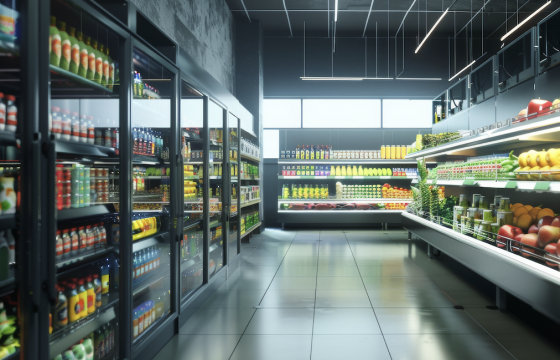
Following World Refrigeration Day and inspired by this year’s theme, 'Temperature Matters', our team of experts have put together a handy guide on ensuring effective temperature control in retail stores.
Following World Refrigeration Day, IMS has been diving into this year’s theme: ‘Temperature Matters’. We’ve been exploring why effective cooling is crucial for the food retail industry and how technology can ensure that fresh products are continually at the right temperature to maintain food safety, quality, and minimise waste.
You might not often think about the specific temperature of your food, unless you’ve been desperate for cold drinks or ice cream during the recent heatwave! But, for food retailers, it’s a constant focus. Monitoring the exact temperature and conditions in which food is stored is crucial. This vigilance helps retailers avoid overcooling, spiralling costs, and limits food waste.
With over twenty years of experience deploying our innovative IoT technology for the largest retail brands, IMS provides unprecedented control and visibility over food retail infrastructure, including refrigeration assets. Here are our top three temperature tips for maintaining the right conditions to enhance food safety, quality, and reduce waste and costs for retailers.
1. Remember to chill wisely - Unlike your fridge at home, retailers don’t have to chill all foods to the same temperature, or to the minimum temperature required by the most susceptible food product, such as meat. Instead, in retail estates, individual refrigeration units can be set to the correct temperature for the specific products they contain. This unique and tailored strategy enables retailers to avoid millions of degrees of annual overcooling, which wastes energy and compromises the quality of other food produce, with the likes of watery yoghurt being a familiar by-product of over-chilling.
2. Fridge TLC is essential - Look after your fridges and freezers! It may not sound glamorous, but these essential pieces of equipment ensure the cold chain operates effectively and ensures safe and quality produce is available to consumers. IoT software manages the performance and health of refrigeration assets, allowing for real-time identification and resolution of machine faults. This not only protects temperatures but also prevents machine breakdowns that can lead to catastrophic stock loss, customer dissatisfaction, and escalating costs. For example, the software can detect data anomalies and automatically generate alerts when a refrigeration assets behaviour indicates potential performance failures, such as prolonged high temperatures. These alerts enable engineers to promptly assess and address issues rapidly. At IMS, our software can even make automatic, remote, real-time adjustments to resolve issues and ensure optimised cooling without human intervention!
3. Retailers need to look at the bigger picture - When monitoring and managing machine data, it’s crucial to recognise that any given refrigeration unit isn’t operating in isolation, but within a wider store environment. For example, if cooling equipment is flagged as running too hot without a clear issue or explanation, it might be due to a faulty HVAC system blowing hot air into the fridge’s temperature sensor (a real-life example!). Deploying IoT technology across an entire store can resolve this issue, providing retailers with a holistic view of every asset, their interactions, and their performance.
Temperature Matters
The top temperature tips outlined in this guide can significantly impact the food retail industry. As we recently celebrated World Refrigeration Day, it’s the perfect opportunity to highlight why temperature management is so crucial in food retail. Effective temperature control, facilitated by specialised connected technologies, ensures food safety and quality while minimising overall waste. Therefore, temperature really does matter!